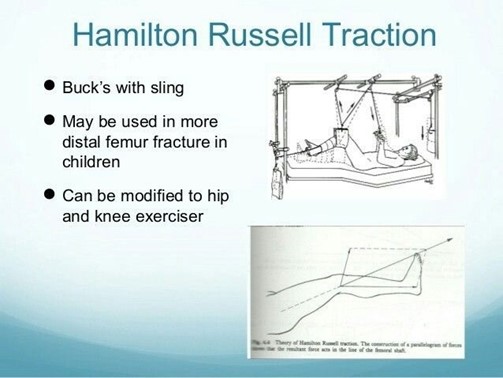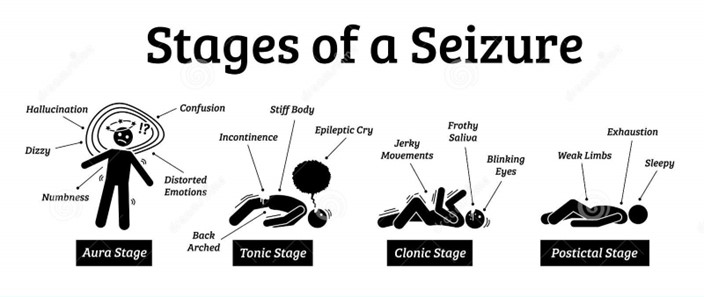A nurse is reinforcing teaching about Russell's traction with a newly licensed nurse. Which of the following statements should the nurse make?
"Russell's traction uses a sling under the knee to treat a fracture of the femur."
"Russell's traction uses a cervical halter to decrease cervical muscle spasms."
"Russell's traction uses skeletal pins to stabilize the fracture."
"Russell's traction uses a pelvic girdle belt to decrease lower back pain."
The Correct Answer is A
The nurse should tell the newly licensed nurse that Russell's traction uses a sling under the knee to treat a fracture of the femur. Russell's traction is a type of skin traction that is used to immobilize and align a fractured femur. It involves placing a sling under the knee and applying weights to the affected leg to provide continuous traction.
Russell's traction does not use a cervical halter, skeletal pins, or a pelvic girdle belt. A cervical halter is used to treat neck injuries. Skeletal pins are used in skeletal traction to stabilize fractures. A pelvic girdle belt is used to treat lower back pain.

Nursing Test Bank
Naxlex Comprehensive Predictor Exams
Related Questions
Correct Answer is B
Explanation
The knee is a hinge type of joint. When describing range-of-motion exercises, the nurse should explain that the knee is a hinge joint. A hinge joint is a type of synovial joint that mainly allows for flexion and extension (and a small degree of medial and lateral rotation)¹. The knee joint is formed by articulations between the patella, femur, and tibia.
a. The knee is not a pivot joint.
c. The knee is not a ball and socket joint.
d. The knee is not a gliding joint.
Correct Answer is B
Explanation
The nurse should use the term "postictal phase" when documenting the client's difficulty arousing and sleepiness for several hours following a generalized tonic-clonic seizure. The postictal phase is the period of time immediately following a seizure during which the client may be difficult to arouse and very sleepy.
Presence of absence seizures, presence of automatisms, and aura phase are not appropriate descriptions for the nurse to use when documenting this finding in the medical record. Absence seizures are a type of seizure characterized by brief episodes of staring and unresponsiveness. Automatisms are repetitive, unconscious movements that can occur during a seizure. The aura phase is a warning sign that can occur before a seizure.

Whether you are a student looking to ace your exams or a practicing nurse seeking to enhance your expertise , our nursing education contents will empower you with the confidence and competence to make a difference in the lives of patients and become a respected leader in the healthcare field.
Visit Naxlex, invest in your future and unlock endless possibilities with our unparalleled nursing education contents today
Report Wrong Answer on the Current Question
Do you disagree with the answer? If yes, what is your expected answer? Explain.
Kindly be descriptive with the issue you are facing.
